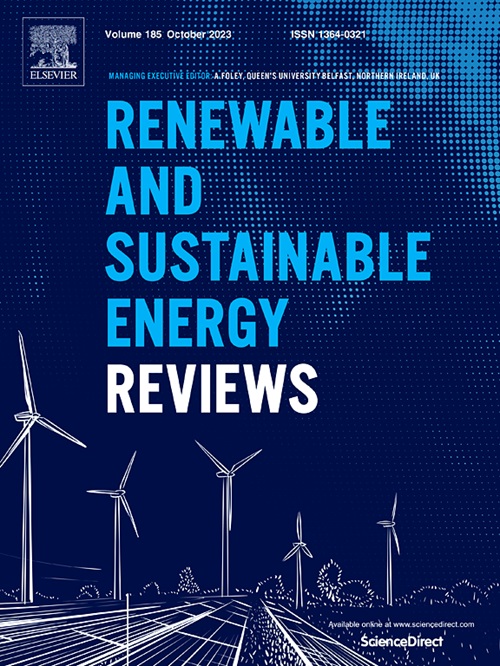Tailoring the structural design of covalent organic frameworks for enhanced photocatalytic carbon dioxide reduction: a review
IF 16.3
1区 工程技术
Q1 ENERGY & FUELS
引用次数: 0
Abstract
Covalent organic frameworks (COFs) exhibit distinct advantages such as extensive specific surface areas, chemical versatility, and sustainability, render them superb candidates for applications in the field of photocatalytic CO2 reduction. In recent years, numerous COFs with remarkable photocatalytic CO2 reduction activity have been reported, and extensive studies have been conducted to understand the mechanisms underlying the enhancement of their photocatalytic activity. This review delves into three pivotal areas: COF design, post-synthetic modifications, and composite photocatalyst construction. It uniquely examines the intricate structure-performance relationship at the molecular level, emphasizing topology, donor-acceptor interactions, crystallinity, functional groups, and heteroatom doping, thereby refining the design framework for COF-based photocatalysts. Moreover, the review offers a profound mechanistic analysis of CO2 reduction, encompassing charge transfer, reaction intermediates, and surface kinetics, providing fresh insights into the efficient development of COF-based photocatalysts.
求助全文
约1分钟内获得全文
求助全文
来源期刊

Renewable and Sustainable Energy Reviews
工程技术-能源与燃料
CiteScore
31.20
自引率
5.70%
发文量
1055
审稿时长
62 days
期刊介绍:
The mission of Renewable and Sustainable Energy Reviews is to disseminate the most compelling and pertinent critical insights in renewable and sustainable energy, fostering collaboration among the research community, private sector, and policy and decision makers. The journal aims to exchange challenges, solutions, innovative concepts, and technologies, contributing to sustainable development, the transition to a low-carbon future, and the attainment of emissions targets outlined by the United Nations Framework Convention on Climate Change.
Renewable and Sustainable Energy Reviews publishes a diverse range of content, including review papers, original research, case studies, and analyses of new technologies, all featuring a substantial review component such as critique, comparison, or analysis. Introducing a distinctive paper type, Expert Insights, the journal presents commissioned mini-reviews authored by field leaders, addressing topics of significant interest. Case studies undergo consideration only if they showcase the work's applicability to other regions or contribute valuable insights to the broader field of renewable and sustainable energy. Notably, a bibliographic or literature review lacking critical analysis is deemed unsuitable for publication.
 求助内容:
求助内容: 应助结果提醒方式:
应助结果提醒方式:


